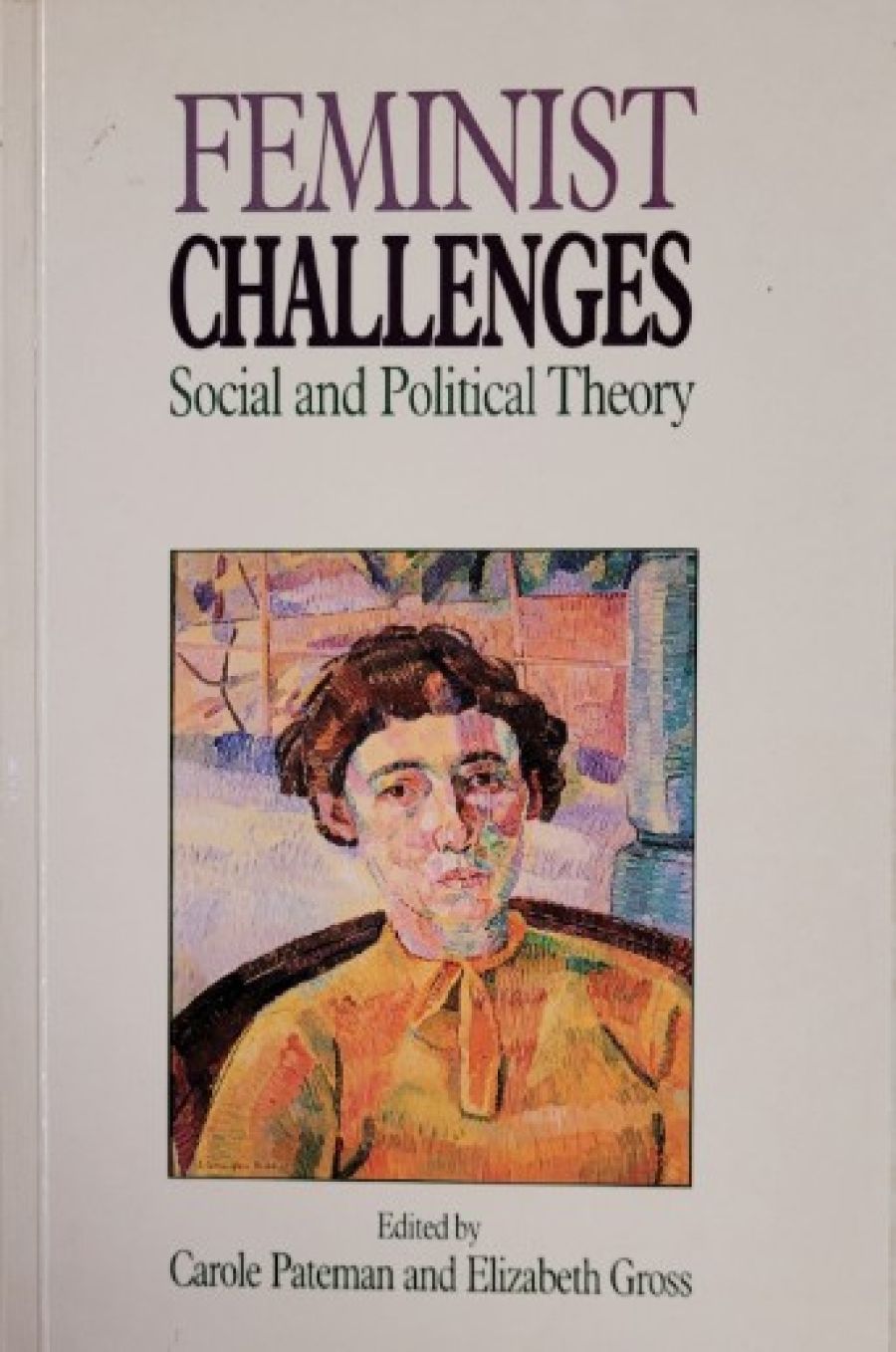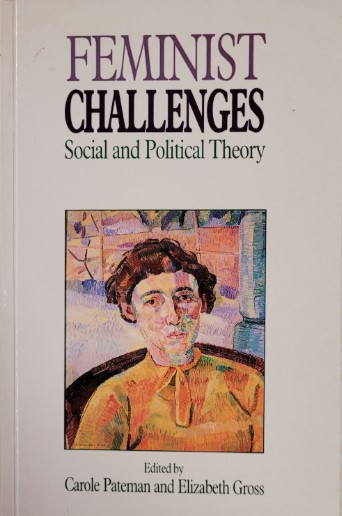
- Free Article: No
- Contents Category: Essay Collection
- Review Article: Yes
- Article Title: Walking in a Theoretical Wonderland
- Article Subtitle: Roads and riddles
- Online Only: No
- Custom Highlight Text:
Feminist Challenges: Social and Political Theory opens with a riddle:
- Book 1 Title: Feminist Challenges
- Book 1 Subtitle: Social and Political Theory
- Book 1 Biblio: Allen & Unwin, 215 p., $14.95 pb
- Book 1 Cover Small (400 x 600):

- Book 1 Cover (800 x 1200):

Walking long enough to get somewhere is a characteristic of this volume. All of the essays claim to do so, distancing themselves from earlier feminist struggles for equality, going beyond just pointing at what is ‘wrong’ with or false about patriarchal theories, choosing instead to see themselves and their work in the terms of their own choice and not falling back on discursive positions traditionally ascribed to or for them by patriarchal and feminist history alike.
They have moved beyond merely looking at the new topics for theoretical discussion provided by the women’s movement and treating them as additional problems to be investigated through existing analytical techniques and theoretical perspectives. They have worked instead from a distinctive feminist theoretical standpoint, asking specific kinds of questions and using particular forms of argument associated with this ‘new’ feminist theory: a theory whose definition Elizabeth Gross gives in the final essay of the collection, with the appropriate title ‘What is feminist theory?’. She comes up with the following answer:
It cannot be specified in advance what an autonomous feminist theory would involve, for this contradicts the very idea of autonomy, the right to choose and define the world for oneself. Although it cannot be specified using one or many models, feminist theory can nevertheless be outlined negatively, for it seems clear that there are a number of theoretical assumptions that it would not wish to reproduce ... [it] cannot be accurately regarded as a competing or rival account, diverging from patriarchal texts over what counts as true ... It could be appropriately seen, rather, as a strategy, a local, specific, concrete intervention with definite political, even if provisional, aims and goals.
The aims and goals of this collection are to act, in the words of its acknowledgements, ‘in part as a response to an absence of feminist analyses of conventional or “male-stream” political and social theory; in part as a response to a call for feminist writing made by a newly formed feminist publishing and book-packaging collective, Redress Press’.
In accordance with these aims, a variety of responses to the relationship of feminism and ‘male-stream’ theory are put forward. Moira Gatens tackles traditional philosophy head-on and comes up with three versions of the relationship between it and feminism. The first claims that there is no relationship between the two; the second acknowledges that there is, but claims that it is historically and necessarily a repressive one; while the third opts for a self-conscious demonstration of the nonneutrality of a philosophical paradigm, thus making feminists who follow it viable both as women and philosophers. Beverly Thiele, in the second essay of part one, looks at women’s exclusion from theory; while Rosi Braidotti looks at the relationship of feminists to ethical theory through Foucault. Catriona MacKenzie traces Simone de Beauvoir’s influence on and by existentialist philosophy, while Anna Yeatman shows how theoretical rejection of the private womanly world has impoverished sociological theory and Judith Allen shows how this has truncated the study of history. All seek to open up a new discursive space where women can write, read and think as women. All want to ‘get somewhere’; the question, however, is where and how long must one walk.
Although a clear purpose is stated – ‘the open[ing] up [of] hitherto unimagined sites, sources and tools for theoretical exploration’ – that purpose, that site, remains always as the ‘unimagined’ in the book. Promises are sent forth, promises of an end, of a space where ‘no one form would be privileged as the truth, the correct interpretation, the right method’, -of a space where ‘interpretations can be judged and used according to their appropriateness to a given context, a specific strategy and particular effects’ – yet no such topos is mapped. The characteristic trait in all of the essays is the push for a continuous gap, a continuous deferring of an end with intimations as to what might till in this gap, but no taking of positions in the here and now, no stopping of the dialectics, no violation of the ‘malestream’. Ironically this is what Moira Gatens’ paper criticises. She laments the fact that not many feminists have taken into account and acknowledged that to ‘change one’s perception of what a subject is changes, necessarily, the conception of what that subject can know or become’. The knowledge and the ‘becoming’ within which these essays are inscribed is very much the knowledge and becoming of academic disciplines and traditional ones at that, something that makes one wonder as to the audience of this book – which then leads to the questioning of its accessibility.
Aren’t these writers excluding others who are not conversant in the discourse, just as they themselves are excluded from ‘male-stream’ theory? Are they not, in their self-conscious demonstration of theoretical non-neutrality and high visibility as women and academics, distancing themselves from a practical fight for equality? An equality which, as Elizabeth Gross rightly points out, ‘implies a measurement according to a given standard’. An equality which implies ‘the equivalence of two (or more) terms, one of which takes the role of the norm or model in unquestionable ways’. The given standard and the norm obvious in this collection is ‘theory’, a theory imparted by the great new critics like Derrida, Foucault and their female counterparts such as Irigaray and Kristeva – movements and directions already taken before by much of recent feminist criticism.
The question, then, that Alice asks of the Cat is quite relevant: ‘Would you tell me please which way I ought to go from here?’ It is a question that the reader of this collection often finds herself asking of the text, only to get the same answer: ‘That depends a good deal on where you want to get to.’ An unsatisfactory answer for some (this reader included), but one that nevertheless makes one go on and choose a direction, even if it is critical – especially because it is critical.


Comments powered by CComment